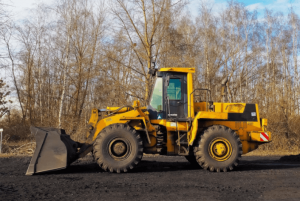CREATE AN AIRTIGHT ENVIRONMENTAL PROTECTION PLAN FOR YOUR CONSTRUCTION SITE
 Construction projects can be massive, which means they often require teams to use heavy equipment to get the job done right. Using this equipment can slowly degrade the environment over time, so before you move forward, it’s important to develop a well thought out plan to help mitigate any negative impacts that your work could have on the environment. Such a plan is referred to as an Environmental Protection Plan (EPP) for construction sites. Not only is creating an EPP good for the environment, it also ensures that your project is in compliance with important federal and local environmental standards.
Construction projects can be massive, which means they often require teams to use heavy equipment to get the job done right. Using this equipment can slowly degrade the environment over time, so before you move forward, it’s important to develop a well thought out plan to help mitigate any negative impacts that your work could have on the environment. Such a plan is referred to as an Environmental Protection Plan (EPP) for construction sites. Not only is creating an EPP good for the environment, it also ensures that your project is in compliance with important federal and local environmental standards.
An EPP should address every conceivable environmental issue, with each section of the plan including steps the construction company plans to take to address the concerns at hand. Construction sites can vary greatly, but here are some general factors that need to be considered when creating an EPP for any and all construction sites.
SOIL DAMAGE
Unintended compaction of soil can make it difficult for vegetation to regrow. Changes to soil can also affect stormwater control and cause drainage issues. A simple route to resolve this issue is to use timber mats at your site — a protective barrier to ensure that heavy construction equipment won’t sink directly into the ground and damage the area.
INTERFERENCE WITH THE LOCAL HABITAT
Some construction projects, particularly pipelines, can be built through very environmentally-sensitive areas, such as wetlands and other spaces where wildlife is prevalent. Therefore, construction teams should develop specialized plans that take into account each unique environment and how to avoid disrupting local wildlife.
RECYCLING/REMOVAL OF CONSTRUCTION WASTE PRODUCTS
During a massive construction project, hazardous waste can often accumulate. While this is almost inevitable, you must formulate a plan to safely dispose of these waste products to prevent further injury to the environment, your team, and local residents. Harmful wastes can include lead, asbestos, and other materials.
SAFETY FOR PEOPLE USING THE AREA DURING THE BUILD PROCESS
As aforementioned, exposure to harmful wastes can cause health and environmental complications, even after the project is completed. Therefore, your EPP needs to include the proper precautions to follow during the construction process, as well as after the project is completed, to ensure local residents and construction workers are not harmed.
Developing a comprehensive EPP that addresses the factors above will greatly help to reduce the negative environmental complications that can result from large construction projects. One of the simplest techniques to implement is the use of timber mats at your construction site. To learn more about how to create an Environmental Protection Plan for your construction site and how Viking Mat’s products can help prevent environmental degradation, contact us today.
